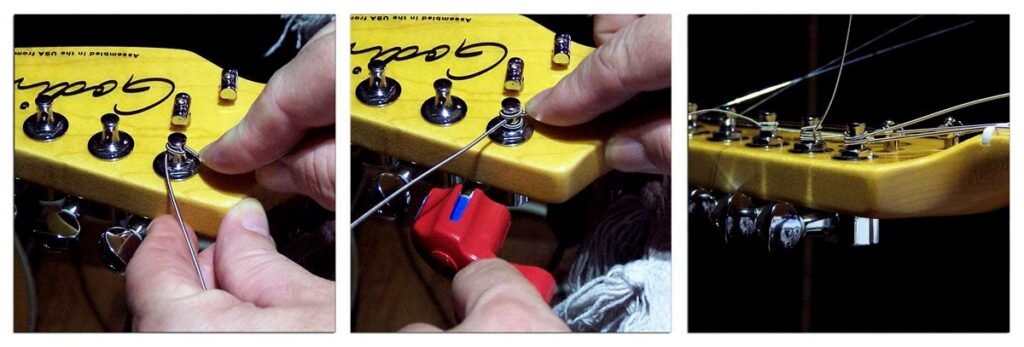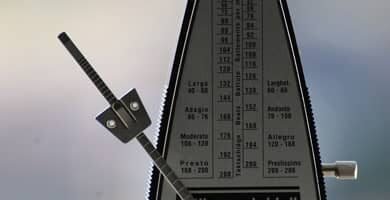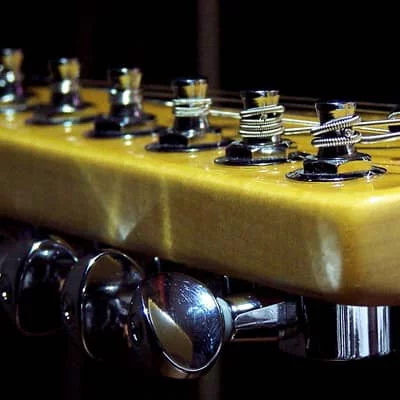
A very important factor when it comes to maintaining stable tuning or even improving the resonance of the instrument, is knowing how to change strings correctly on our guitar.
By following the steps listed below, our guitar will enjoy tuning stability, as if we had a set of locking tuners mounted on our guitar. So stay tuned because this is not something minor.
First we must introduce the end of the new string through the bridge. After passing the string through the hole in the peg and tightening it by hand, we must leave a length of string several centimeters long, which will be the piece of string that will end up wound on the winch (image on the left).
Twist the string several times around the winch
It is important to leave enough string available, so that it can be rotated several times around the winch. We will have to increase the number of turns should be increased as the string is thinner.
For example, for the sixth string, 2 turns are enough. Since it is a string of a certain thickness, and it is more difficult for it to escape or slip slightly from the winch.

For the fifth string it wouldn’t hurt to turn it at least three times.
For the fourth and third string, it would be best to leave enough length of string so that it turns on the winch four or five times. And for the second and first strings, five or six turns are recommended, avoiding the turns being stacked on top of each other.
In this way the tension of the string is distributed over several turns, preventing the string from escaping. Apart from getting the string more crowded against the nut. Since by contributing several turns, the angle of the string with respect to the nut increases, benefiting the sustain of the instrument.
Use Tools to Change Guitar Strings Faster
Turning the peg several turns by hand is a bit tedious to do. But to do this we have cheap string winders, which will greatly facilitate our work.

After leaving the necessary length of string, we fold the string at that point, and pass the first turn over the excess string and the rest below (image on the left). In this way, the surplus is trapped between the first two turns. From there, we just have to turn the peg until the string is tightened.
I usually cut the four thickest strings flush, moving the string from side to side until it snaps, and cut the two thinnest ones with pliers and bend the excess against the winch. Since they are more prone to slipping or even escaping from the winch. But if you want you can do this same thing on all the strings for safety.
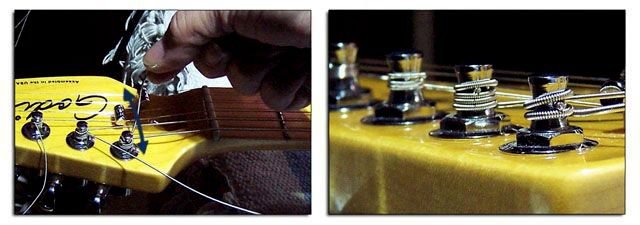
Change Guitar Strings With Locking Tuners
If we place the strings in the way indicated above, we will not miss any locking pegs. Except for the fact that changing strings on a guitar with a locking headstock is easier and faster.
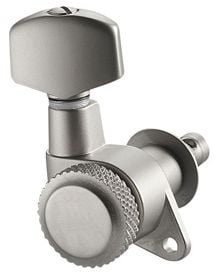
If we have locking pegs, string placement is greatly simplified. It is almost impossible to make a mistake in the process of installing new strings. Solving the problems of incorrect strings placement on a standard headstock.
In the case of locking pegs, we would simply have to pass the string through the hole in the winch, and tighten the string by hand. Then we just have to tighten the lock, to finally turn the peg until the string is tuned.
What the blocker does is hold the string to the winch, like the screw on a splicing plug would do to hold an electric cable.
Change Guitar Strings With Vintage Kluson Tuners
On the Vintage Fender style tuners known as Kluson, string installation would also be very easy to do. We simply must leave a sufficient section of string to be able to wind it on the winch, and cut the excess section. Then we introduce the end of the string through the hole of the peg, and then we would only have to wind the string.

Online Tuner and Metronome
You can also have essential tools for the guitarist such as the multiple Online Tuner, or the Metronome to help you maintain a constant rhythm.


